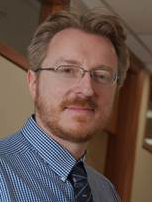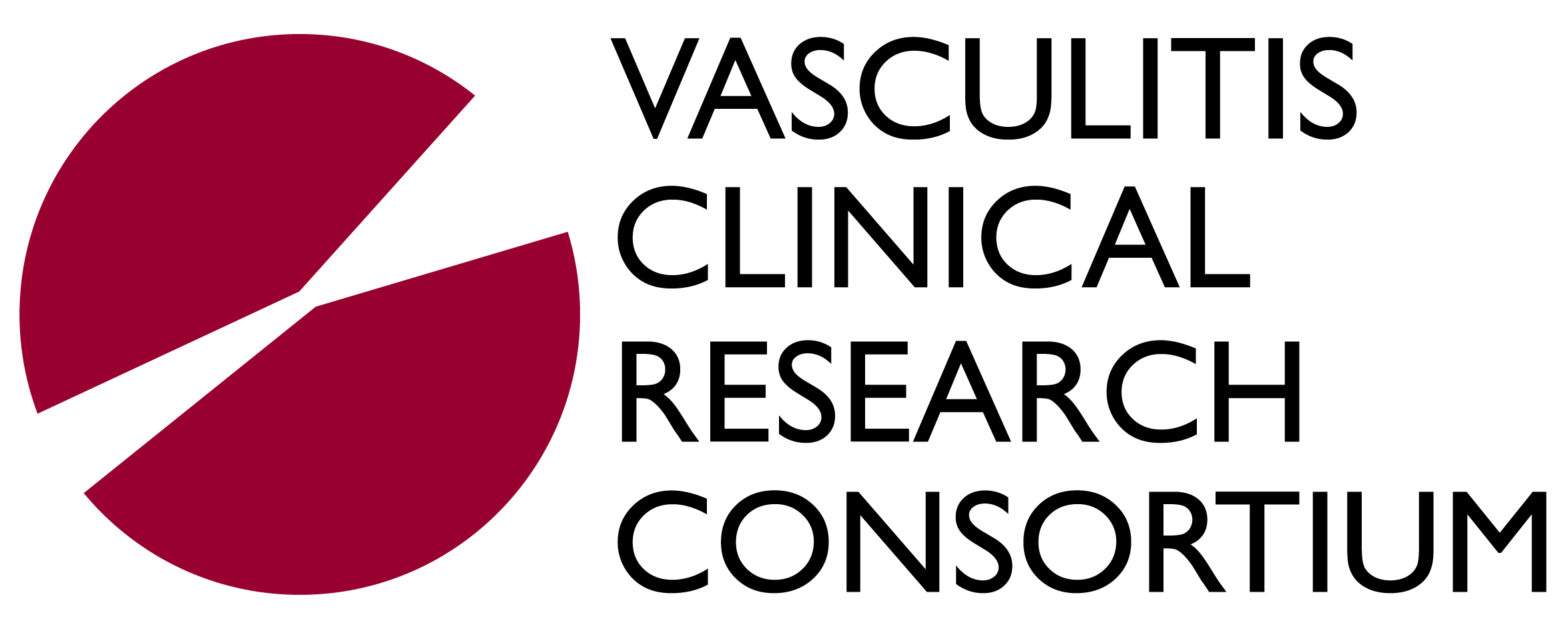Christian Pagnoux, MD, MPH, PhD

Christian Pagnoux, MD, MPH, PhD, is an associate professor of medicine at Mount Sinai Hospital, Toronto. Dr. Pagnoux completed his VCRC Fellowship (2010-2012) at Mount Sinai Hospital, Toronto, with Simon Carette, MD, MPhil, FRCPC, as his mentor. Dr. Pagnoux is member of the VCRC Steering Committee, a co-investigator, and has led on a numerous VCRC biomarker, genetic, and clinical research projects.
This interview with Dr. Pagnoux was conducted by the Vasculitis Foundation, March 2013.
Dr. Pagnoux, what are your expectations or goals as a member of the VCRC? Why is this opportunity important to you?
I wanted to have a different look on the way to manage patients with vasculitis and conduct clinical research than that I gained during the past eight years working in France with Professor Guillevin and the French Vasculitis Study Group. The VCRC has built an impressive network and patient registry and conducted major and cornerstone trials in vasculitis.
Thus, I hope to learn a lot from this two-year fellowship on how to manage a network and make it a long-term success. Working besides world renown experts from across the Atlantic is a major opportunity and I am happy they granted me to do this, the VCRC but also the Toronto Western Hospital/Toronto General Hospital Foundation and Dr. Simon Carette, my mentor here.
Share some of the current studies or clinic trials in which you’re involved.
In France, I am involved in some of the FVG prospective trials, including the patient cohort database, created in 1983 by Professor Guillevin and that I reformatted it in 2002 and have updated thereafter, the CHUSPAN 2 trials, which aimed to compare azathioprine and corticosteroids versus placebo and corticosteroids in patients with eosinophilic granulomatosis with polyangiitis (Churg-Strauss), polyarteritis nodosa (PAN), or microscopic polyangiitis (MPA) without poor prognosis FFS factor (55 patients enrolled); the MAINRITSAN trial, which is to compare regular infusions of rituximab versus azathioprine for maintenance in ANCA-ASV; and the creation of a registry for primary central nervous system vasculitis (CNS).
During my stay in Canada, I will try to conduct several studies (comparison of patient database using different methods to adjust for their potential baseline differences to study treatment effect and outcome; management of corticosteroids during therapeutic trial and their potential impact on treatment effect evaluation), initiate some clinical studies across Canada (Canadian Vasculitis Research Network) and will be part of the PEXIVAS at Toronto. I am currently in charge of the approval procedure for the center to open.
How has your previous experience / education prepared you for what you’re now doing with the VCRC?
I gained experience by working with Professor Guillevin on how to make a research network to work and conduct major studies, always keeping in mind that studies have to yield practical conclusions to improve patient management and outcomes.
Why did you choose rheumatology as your specialty? Has anyone in your friend/family circle ever had an autoimmune/vasculitis disease? Other than rheumatology, what are some of your other clinical/medical areas of interest?
The system in France is a little bit different. I am specialized in internal medicine, not rheumatology. In France, you have six years of medical school, then you have to go through a national examination and depending on your rank, you can chose a specialty or become a general practitioner.
If you can choose a specialty, then you can opt for example for rheumatology (four additional years of PGY) or internal medicine (five additional years of PGY, with rotations in rheumatology department if you want). I chose internal medicine, because it has a more global way of managing patients, but had three rotations of six months each in rheumatology department during my PGY.
None of my friends or family had autoimmune disease. My father died of cancer. I like rare diseases, internal medicine and, far from it, orthopedic surgery. That is the specialty that I would have chosen, if I had not been so interested in internal medicine and its global way to take care of patients. Extreme specialization can be good, but I like to know how to treat mild hypertension, diabetes, common infections, and not to always consult a specialist for every issue that is not rheumatology.
Have you studied or concentrated on any particular vasculitis disease? If so, why are you drawn to this specific vasculitis?
Yes, I concentrated on eosinophilic granulomatosis with polyangiitis (Churg-Strauss), granulomatosis with polyangiitis, microscopic polyangiitis, and polyarteritis nodosa, so far, mainly because these were the diseases on which Prof Guillevin has conducted the majority of his trials during the past year. In addition, they are very diverse and can involve so many organs. From an internist point of view, that is fascinating and asks you to be able to handle with all these different organ manifestations at the same time. It is the same for other systemic diseases, like lupus or systemic scleroderma. People you meet during your training make you chose some of them (and I met Prof Guillevin who is a great and passionate physician able to transmit his passion).
You were educated and trained in France. Share some of the differences in how rheumatology is taught to medical students in France and U.S. What are some of the differences in how vasculitis research is done in France and US?
In France, the network was created in 1982 and every center willing to be part of it can be. There is a registry and several studies have been done and their results published through this huge and massive collaboration. In the US, the network is focused on high referral centers, approximately 10, but patients with vasculitis seem to be more regularly and systematically referred to these centers, rather than being managed entirely in their local hospital or by the geographically closest rheumatologist. So, less center but a more sharp entry process. Two different ways and approaches of creating and managing a research network. Very interesting. I don’t know yet which one works the best… you may need both of them, or something between?
Share some of the advancements or improvements in diagnosing and treating vasculitis since you first began your work in rheumatology. New drug therapies, or diagnostic tests, etc.
I started my work in vasculitis in 2002 and I was therefore able to read and follow all these important publication that better devised the standard of care of patients with PAN or AASV, ie, the EUVAS trials (CYCAZAREM, CYCLOPS, NORAM, MEPEX), the French trials (WEGENT, CHUSPAN, IGANCA) and the VCRC trials (WGET, and more recently the RAVE trial on rituximab).
Treatment can achieve remission in more than 90% of the patients now. Unfortunately, it remains a long-term treatment and there is still an important risk of relapse. Thus, there is still some work to do, treatment strategies to optimize and treatment to identify to further improve the patient outcome and try to get them cured, rather than to obtain “only” sustained remission.
You studied under the noted physician, Professor Guillevin. Share some of your observations, experiences while working with him. How has he impacted your career in rheumatology?
I gained experience by working with Professor Guillevin on how to make a research network to work and conduct major studies, always keeping in mind that studies have to yield practical conclusions to improve patient management and outcomes. Professor Guillevin is a great and passionate physician, able and willing to transmit his passion to others.
One of the goals is to get more vasculitis disease patients into clinical studies. What would you tell a patient who asks you, “Why should I get involved in a clinical study? What good will it do for me, or for other patients, or for vasculitis research.”
Vasculitides are very rare diseases and if we want to know their precise outcomes, know how to adjust therapy based on each individual patient characteristic, or identify new effective drugs, we need to conduct studies involving a lot of patients. There are many studies in which every patient can be included, the simplest one being the observational cohort studies. In the cohort studies, patients would not receive any “experimental treatment” or be “lab animals”, but we will collect, anonymously, their clinical data, and sometimes blood samples, so we can ultimately try to identify disease markers or clinical parameters of prognosis.
In addition, since we still are trying to adjust and improve therapy, several therapeutic trials are ongoing with the aim to improve outcome. And at present, we cannot, like in the past when diseases were often fatal, experiment with new drugs, from one day to another. All drugs are strategies we use now are to improve outcome. They usually have been used for other diseases before being studied in vasculitis. Thus we are almost confidently aware of the pros and cons of their use in vasculitis. The question is whether they can further improve patient outcomes and reach the absolute goal of durable disease cure.
Why are vasculitis patient advocacy groups important to the overall research into the disease? What role do they play in helping find treatments? What are differences and similarities between patient advocacy groups in France and the U.S.? How can a patient advocacy group be helpful to doctors like you? How can patient advocacy groups work in a good way with the medical community?
I was very happy to be part of the creation of the patient support group in France. They made a lot of progress in France to help patients and to raise awareness of the disease. Information and itinerant meetings across France have been done, to inform patients, their families and their GPs on what was vasculitis, at what point was the research in the world on these rare disease and what could be expected for the future. It is usually a great pleasure to meet patients and their families and listen to their expectations. This gives us energy for the work we are trying to do and I am so happy to see one/some of my patients during these meetings, doing so well that they can attend, bring their families, enjoy meeting other patients, and just not feel alone with their rare disease.
Studies can also be done through the patient support group, as well as dissemination of information on ongoing trials and referral centers. Sometimes, this is very useful… for the patients to be reviewed by specialists in the field.

